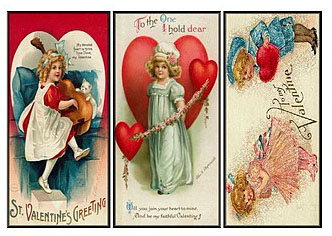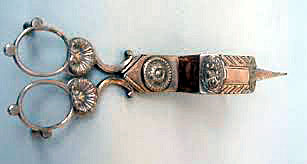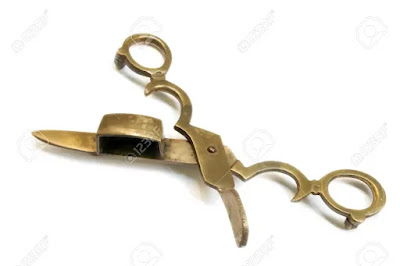 QUESTION: My grandfather was a merchant seaman for most of his life. From his work, he developed a passion for historic ships and out of that for models of historic ships in bottles. Sadly, he’s recently passed on but before he died, he gave me the ships in bottles, about a dozen of them, that he had collected. I’m curious to learn how long people have been building models of historic ships in bottles. And exactly how did they do that?
QUESTION: My grandfather was a merchant seaman for most of his life. From his work, he developed a passion for historic ships and out of that for models of historic ships in bottles. Sadly, he’s recently passed on but before he died, he gave me the ships in bottles, about a dozen of them, that he had collected. I’m curious to learn how long people have been building models of historic ships in bottles. And exactly how did they do that?
ANSWER: Historically, the first mention of objects placed in bottles dates back to 1719. A German artist, musician and magician, Matthias Buchinger, built models, although not necessarily of ships, inside bottles. This was remarkable since he was born without arms or legs.
 The oldest surviving ship in a bottle, a Turkish or a Portuguese three-masted warship, dates to 1784. Instead of laying on its side as most do, the maker placed it in an egg--shaped bottle, which hes placed upside down over a wooden stand.
The oldest surviving ship in a bottle, a Turkish or a Portuguese three-masted warship, dates to 1784. Instead of laying on its side as most do, the maker placed it in an egg--shaped bottle, which hes placed upside down over a wooden stand.
The idea of putting a model of a ship in a bottle became very popular after the fast sailing ships like the clipper came into service. So most of the antique ships in bottles found today appeared after 1840.
Ships in bottles became more popular as folk art in the second half of the 19th century, after the introduction of cheap, mass-produced bottles made with clear glass. They also became a very popular nautical gift during the late 18th and the early and mid-19th centuries in both Europe and the Americas.
Historians believe that monks living in monasteries spent tireless hours working on the earliest examples of these intricately carved models. The emergence of putting ships inside bottles can be followed back to the mid to late 19th century.
Ships in bottles were a unique way for anyone to connect with maritime history even if they weren't a sailor. By the 20th century, with the creation of new, faster ships on the seas, so ships in bottles became more diverse in design.
 Antiques experts classify a ship in a bottle as an impossible bottle—a bottle containing an object that does not appear as if it would fit through the bottle's mouth. It’s the most iconic type of impossible bottle. Other common objects often inserted into bottles include fruits, matchboxes, decks of cards, tennis balls, racketballs, Rubik's Cubes, padlocks, knots, and scissors. These may be placed inside the bottle using various mechanisms, including constructing an object inside the bottle from smaller parts, using a small object that expands or grows inside the bottle, or molding the glass around the object.
Antiques experts classify a ship in a bottle as an impossible bottle—a bottle containing an object that does not appear as if it would fit through the bottle's mouth. It’s the most iconic type of impossible bottle. Other common objects often inserted into bottles include fruits, matchboxes, decks of cards, tennis balls, racketballs, Rubik's Cubes, padlocks, knots, and scissors. These may be placed inside the bottle using various mechanisms, including constructing an object inside the bottle from smaller parts, using a small object that expands or grows inside the bottle, or molding the glass around the object.
 Over the centuries, many people probably asked themselves just how the model ships got into the bottles. There are two ways to place a model ship inside a bottle. The simpler way is to rig the masts of the ship and raise it up when the ship is inside the bottle. The maker built the masts, spars, and sails separately and then attached them to the hull of the ship with strings and hinges so the masts could lay flat against the deck of the ship. He then placed the ship inside the bottle and pulled the masts up using the strings attached to the masts. However, the hull of the ship must have still been able to fit through the neck of the bottle. Ships bottle makers often chose bottles with minor distortions and soft tints to hide the small details of erecting the ship inside the bottle, such as hinges on the masts. Some used specialized long-handled tools to build the entire ship inside the bottle.
Over the centuries, many people probably asked themselves just how the model ships got into the bottles. There are two ways to place a model ship inside a bottle. The simpler way is to rig the masts of the ship and raise it up when the ship is inside the bottle. The maker built the masts, spars, and sails separately and then attached them to the hull of the ship with strings and hinges so the masts could lay flat against the deck of the ship. He then placed the ship inside the bottle and pulled the masts up using the strings attached to the masts. However, the hull of the ship must have still been able to fit through the neck of the bottle. Ships bottle makers often chose bottles with minor distortions and soft tints to hide the small details of erecting the ship inside the bottle, such as hinges on the masts. Some used specialized long-handled tools to build the entire ship inside the bottle.
Since ships of the past came in different shapes and sizes, the size of the bottle and the extent of its flat-base shape when placed horizontally mattered immensely to the makers.
To read more articles on antiques, please visit the Antiques Articles section of my Web site. And to stay up to the minute on antiques and collectibles, please join the over 30,000 readers by following my free online magazine, #TheAntiquesAlmanac. Learn more about the "Pottery Through the Ages" in the 2022 Winter Edition, online now. And to read daily posts about unique objects from the past and their histories, like the #Antiques and More Collection on Facebook.




















































